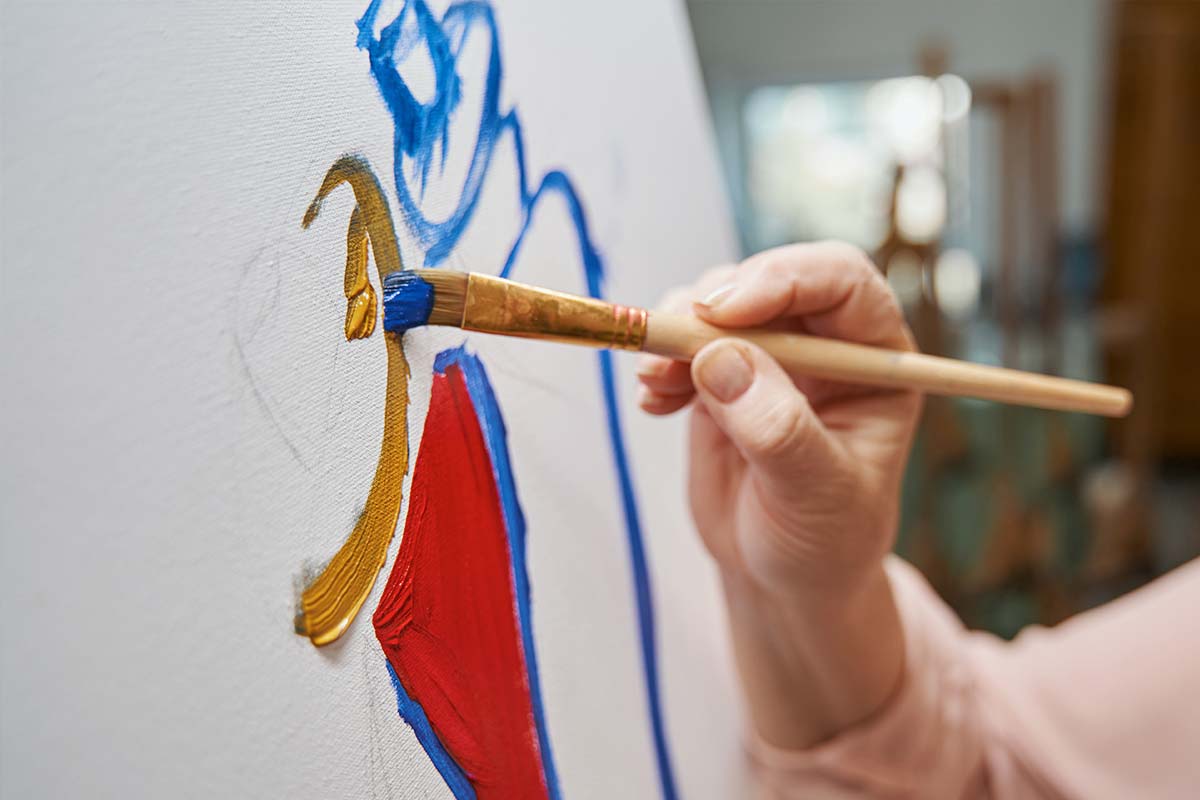Ovarian cancer is a journey that often requires strength, courage, and support in various forms. Among the diverse complementary treatments available, art therapy has emerged as an invaluable tool to assist individuals grappling with the emotional and psychological ramifications of this condition.
Find out how embracing creativity through art can be an integral part of the healing process for ovarian cancer patients and survivors and a gentle refuge for caretakers.
Art Therapy as a Complementary Treatment
Art therapy is a therapeutic practice that utilizes the creative art-making process to explore feelings, reconcile emotional conflicts, foster self-awareness, manage behavior and addictions, develop social skills, improve reality orientation, reduce anxiety, and increase self-esteem.
Emotional Well-Being and Stress Reduction
The distress that comes with an ovarian cancer diagnosis can be profound. Feelings of anxiety, depression, and isolation are common. Art therapy offers a peaceful, often non-verbal, outlet for expressing difficult emotions. By channeling energy into creation, many find a reduction in their stress levels and an improved capacity to manage their internal turmoil.
Expression of Emotions and Experiences
Talking about cancer can be incredibly difficult. Art therapy allows for a different kind of communication. It can enable patients and survivors to externalize their experiences, sometimes revealing emotions and thoughts they didn’t realize they had. This form of expression can be particularly empowering, as it breaks communication barriers and taps into deeper layers of emotion.
Healing Through Creativity
Engaging with art therapy doesn’t require any artistic expertise. This accessibility opens the door for anyone to find solace in creation. Here are some of the modalities that can be explored:
Painting and Drawing
Patients and survivors can create visual representations of their journey through the stroke of a brush or the scratch of a pencil. This tactile process can serve as a metaphor for their experiences—each color and line embodying a part of their story.
Collage and Mixed Media
Collage allows individuals to piece together disparate elements to form a coherent whole. It can symbolize the reconstruction of one’s life and identity in the face of cancer. Mixed media art encourages experimentation and, through diverse materials, can represent the many facets of coping with illness.
Clay and Sculpture
The act of molding and shaping can be a powerful way to regain a sense of control. Working with clay could reflect the reshaping of one’s life while facing the physical changes that come with ovarian cancer.
Empowering Self-Expression
Art therapy is a personal journey of self-discovery. Ovarian cancer can challenge one’s sense of self; through creative activities, individuals can find a path to rebuild their self-esteem and confidence.
Self-Reflection
Creating art can prompt introspection. In processing through art, many find new perspectives on their situation, providing clarity and insight that might not have been accessible through words alone.
Sense of Control and Empowerment
Art therapy places the creative control entirely in the hands of the creator. For those whose lives have been upended by cancer, reclaiming control is an essential step. Every decision made during the creative process is an exercise in empowerment.
Supportive Community and Connection
Art therapy isn’t just a solitary activity; it can be experienced in groups, providing a collective space where individuals can connect over shared experiences.
Group Sessions
Group art therapy fosters a sense of community and belonging. Patients and survivors can share their creations with others who understand what they are going through, often leading to profound connections and support networks.
Safe Environment
Facilitated by a professional art therapist, these sessions are designed to be a haven for expression without judgment—an essential aspect for those who might feel vulnerable sharing their feelings.
For ovarian cancer patients, survivors, and caretakers, art therapy is a form of treatment that transcends the physical to nurture emotional and psychological well-being. It cultivates resilience, provides comfort, and enhances communication. The power of art therapy lies in its ability to unlock emotions and enable healing through creativity.
In a world that can feel dominated by medical routines and uncertainty, the act of creation is a meaningful respite. Art therapy offers a journey, not to escape from the reality of cancer but to navigate through it with grace, dignity, and beauty.
Remember, you don’t have to be an artist to benefit from art therapy. It’s about the process, not the product. All it takes to start is the willingness to express yourself and the courage to let creativity guide your healing path.








